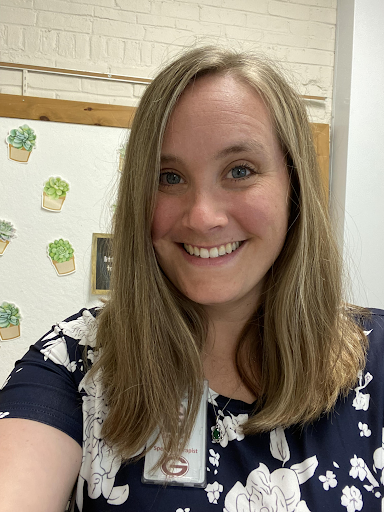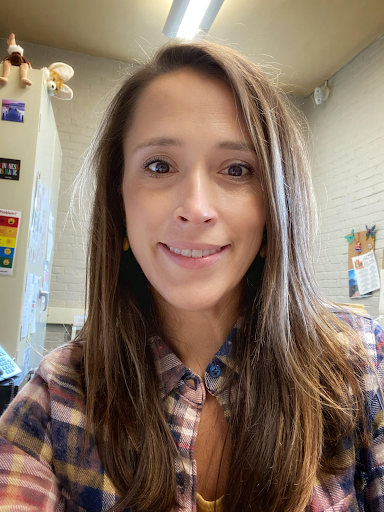The Speech and
Language Service Department
Park Terrace Elementary School
518-775-5746
Mrs. Biche
Email

Mrs. Adams-Wood
Email

Kingsborough Elementary School
518-775-5736
Mrs. Robare
Email

Ms. Metzger
Email

Boulevard Elementary School
518-775-5740
Mrs. Berlin
Email

Mrs. Adams-Wood
(Part-time at Boulevard)
Email

PreK Speech at Park Terrace & Kingsborough
Park Terrace Elementary School 518-775-5730
Kingsborough Elementary School 518-775-5750
Mrs. Esler
Email

Mrs. Biche, Mrs. Adams-Wood, Mrs. Robare, Ms. Metzger, Mrs. Berlin, and Mrs. Esler are all ASHA certified, licensed Speech-Language Pathologists (SLPs).
If you have any questions regarding our services please contact the Speech Department at your child’s individual school.

What YOU can do at home to help children progress and expand their speech and language abilities:
Talk about things you do
Talk about places you go
Answer questions
Listen to your child
Read and talk about books
Tell stories together
Play games with your child
Play word games together
Pretend with your child
Praise your child
Activities to Promote Articulation Skills at Home Here are more fun, easy ways to practice your child's sound at home. Even five minutes per day will encourage generalization and improve your child's success with his/her target sound(s)!
Take a sound walk; walk with your child through the neighborhood, a park, or a shopping center. Tell your child to look for things with his/her target sound and make them.
The fishing game can be used for any sound. Attach a string with a magnet to a stick. Have small picture cards of the child's target sound. Put a paper clip or staple at the top of the picture. Have your child try to "catch fish" and name each one.
On three small paper bags, paste a word or picture card of an object with the target sound -one, in the beginning, one in the middle, and one in the final position (if the sound is S, you might have a sun, a castle, and a dress). The child selects a card or picture, says that word, and then drops it into the bag that matches the sound position.
Find and cut out pictures from magazines, newspapers, or coloring books. Make a sound collage by gluing all of the pictures with your child's target sound onto one page.
Visit the public library with your child. Have him/her select books that might have characters with names that begin with your child's target sound. As you read the story, have your child name those characters using his/her sound correctly.
Any board game can be used for carry-over. Before your child takes a turn, spins the spinner, or rolls the dice, have him/her say a word with the target sound five times.
A trip to the grocery store is a great time for sound practice. Ask your child to spot food or product names throughout the store with his/her target sound. As he/she names what they find, have him/her use that word in a sentence
If your child enjoys talking to relatives on the telephone, use that time as an opportunity to reinforce clear speech. Explain that it is especially important to correct his/her speech sounds so that the listener can understand his/her message. If necessary, practice what your child will say before he/she speaks.
When eating out, have your child search for his/her sound on the menu. Have him/her rehearse what they would like to order, and have him/her use his/her best speech to tell the server what he/she would like!
Flip through pictures or photo albums (children LOVE to look at their baby pictures!). Have your child name who is in each picture and what that person is doing. Encourage clear speech and correct your child's production of his/her target sound as you enjoy looking at each snapshot.
Children’s communication skills improve when parents:
Interact more with their child
Respond to their child’s attempts to communicate
Use “child-directed speech” (talk about what the child is focused on or interested in, using simplified, melodic speech)
Emphasize important words in a sentence (e.g. “you’re eating a BANANA!”)
Expand on what the child has said (e.g. Child says, “Key”. Parent says, “Yes that’s the key for the car.”
Here is some information about different settings a child may encounter when they are receiving therapy services through a school therapist:
Individual Pull-Out Therapy – This takes place outside the child’s classroom setting and is given on a one-on-one ratio. This type of therapy might be beneficial when the child has unique or severe needs that require fewer distractions. In addition, in school, sometimes a child’s schedule might limit the therapist to seeing the child only during certain times.
Group Pull-Out Therapy – This takes place outside the child’s classroom as well; however, there are other children in the therapy session. This setting might be beneficial when everyone in the group is working on compatible goals, although not necessarily the same skills. This is also a good setting for children who are working on their social skills.
Classroom Therapy (Push-In) – Therapy for this setting takes place in the classroom. It is also beneficial for scholars who do not like their day being interrupted by being pulled out of their classroom and routines. Depending on the child’s goals, it might also be more beneficial for his/her individual needs.
